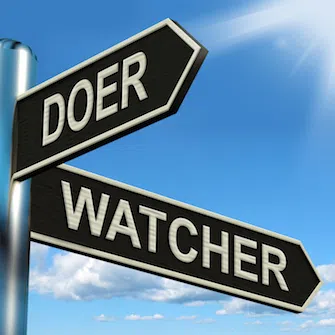And how to make fast fixes for better results.
I recently was reading an excerpt from “The Game-Changer,” a book by A.G. Lafley, CEO of Proctor & Gamble, and Ram Charan, a very prominent expert on business management. In the excerpt, Lafley talked about making sure that everyone at P&G knows that, while they may have supervisors and bosses within P&G, the ultimate “boss” is the customer.
What a simple and elegant way to think about your business. Yet I am sure many of us can share stories of doing business with a company and feeling like we were unimportant or even the enemy — any of you who travel extensively know exactly what that feels like.
If we accept, as we should, the premise that to be successful in our business we must have an absolute customer orientation, then it only stands to reason that as part of that orientation we must actively seek customer feedback, and possess a deep understanding of our customers’ businesses and what is important to them. How do we accomplish that?
In my experience in the hvacr industry I have seen how many different companies approach the concept of customer interaction and feedback. In my opinion, most of the thinking on this topic has been confined by the hierarchy that is present in our industry. That hierarchy places us, as specialty contractors, relatively low on the “food chain,” and places general contractors, construction managers, engineering and architectural professionals, and particularly the customer in places of superiority on the food chain. In fact, based on my observations, many in our industry treat customers as though they are untouchables. They act intimidated, sheepish, like they are “bothering” the customer. Or they feel compelled to go through the general contractor in their efforts to communicate with customers. This devalues us and our companies. In other words, we are treated the way we act.
To me, the first and most important tenet of maintaining customer interaction is having the organizational self-confidence that you can help your customer succeed, and that your customers will derive value from their interactions with you. First and foremost it is about your mindset. Once that is established you can think about the tactics of customer feedback.
When it comes to the tactics of customer interaction and feedback, we tend to initiate it only when there is a “transaction” at stake. In other words, we engage our customers when we know they have a project pending or when we read about something they might be doing. No matter what we say when we contact them, they know our real interest is in their project.
My advice is to think about engaging your customer in a non-transactional setting. Spend time with them when there is no project pending. Then you can really explore their business, investigate strategic issues they may be facing, and better understand the keys to their success. If you engage them in this non-transactional setting, I have found a great willingness to share on the customers’ part. Why? Because they will know that you are sincerely interested in them and their business because there are no deals pending.
Ultimately, customers will do business with people and companies that help them be more successful, and whose best interest they advocate. In order for us to understand key success factors and get to know the individuals, we have to invest in a non-transactional setting. This takes time and commitment because we don’t go to the meeting and “come back with the job.” This requires a long-term view and a commitment from senior management that it is OK to engage customers in this way.
For example, a customer with whom we have a long-term relationship recently announced an ambitious capital-expansion program. I happened to be with the customer and I asked them what typically happens right after such an announcement is made. Not surprisingly, I learned that they are flooded with calls from contractors who want to meet with them to discuss their upcoming capital plans and to express their interest in helping execute them.
This, to me, is a “day late and a dollar short” strategy to engage customers. These contractors are contacting customers only when a transaction is pending. What they are implicitly saying is that they have no interest in helping this customer, except when they have work. Is that consistent with a long-term relationship strategy? They may say that is their strategy, but their actions would suggest otherwise.
Customer feedback is very important in the context of an organizational commitment to a customer orientation. Customer feedback is an all-the-time philosophy and must be preceded by building organizational self-confidence that we can create value for our customers, and our customers will benefit from their relationships with us. I would encourage you to think about engaging your customer in a non-transactional setting, and focus the discussion on them and their business.
Customers will view you differently from everybody else, and you will create a competitive advantage in your knowledge of their business, their key strategic issues, and in showing that you sincerely care about their success.
The Grunau Co. is a full-service mechanical systems company with more than 500 employees. The company provides expertise on design, construction, installation, and service and maintenance for the commercial, industrial and institutional markets.


